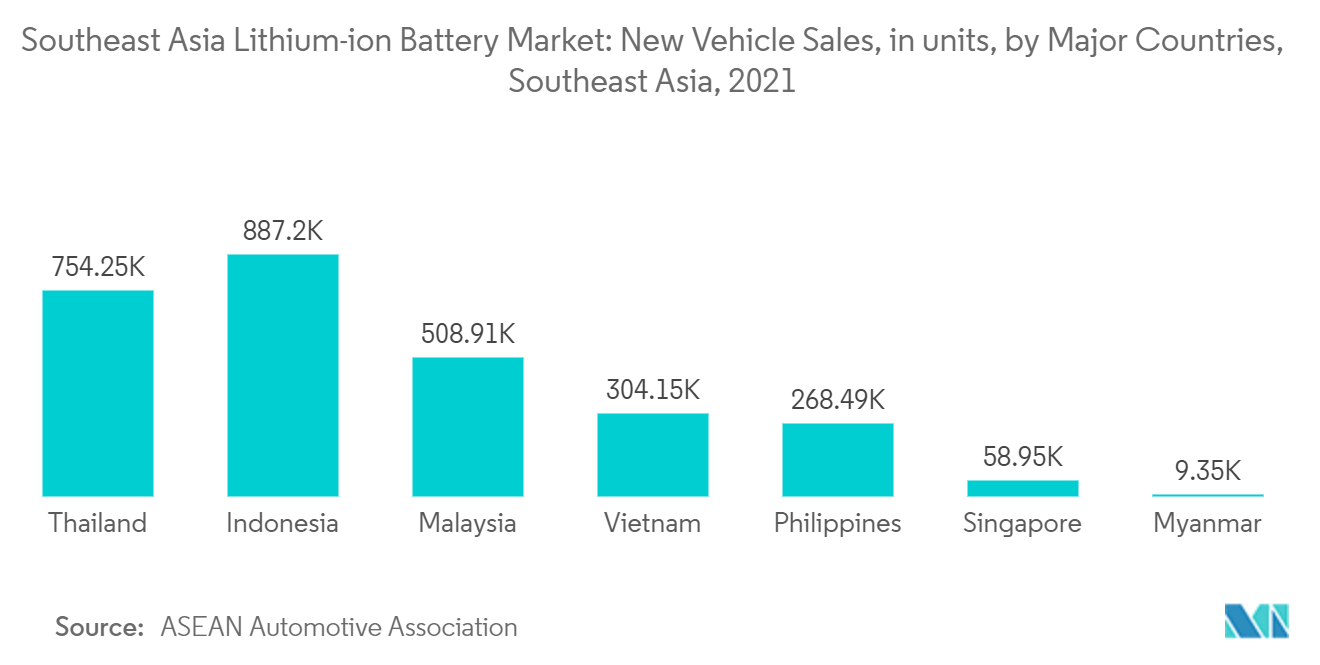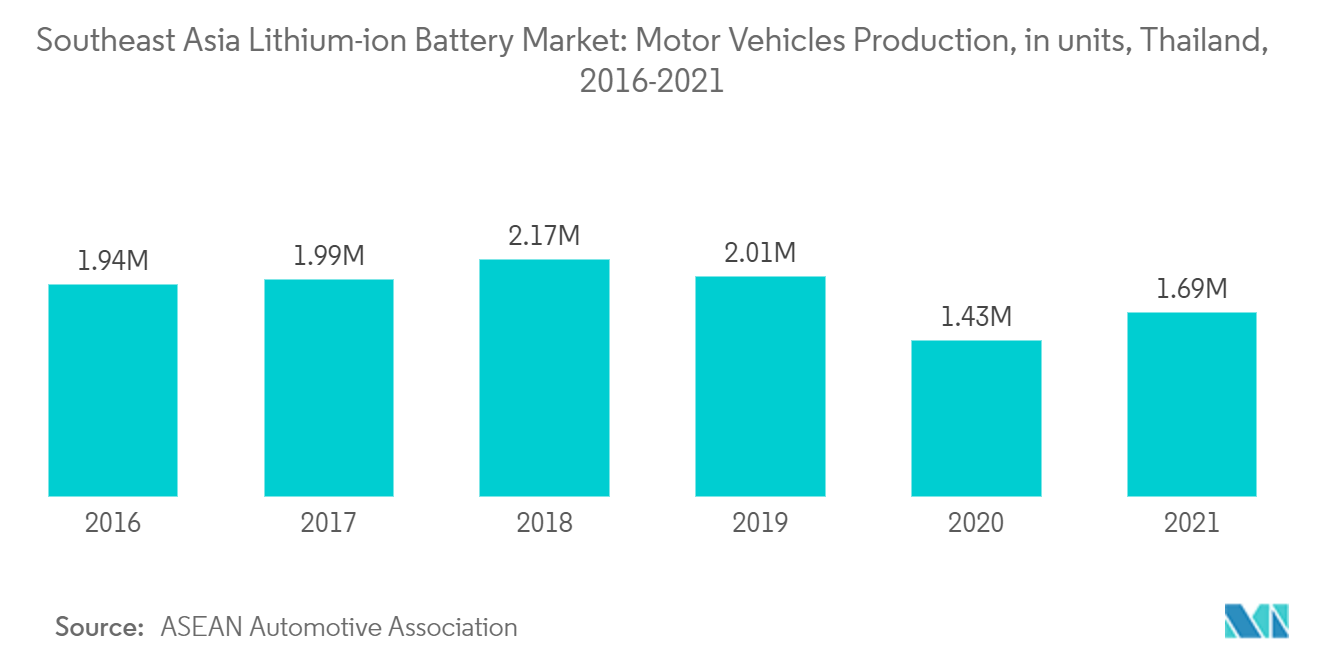Market Trends of Southeast Asia Lithium-ion Battery Industry
This section covers the major market trends shaping the Southeast Asia Lithium-ion Battery Market according to our research experts:
Automotive Sector to Dominate the Market
- The rising fluctuation in the cost of fuels like gasoline and natural gases and the increasing demand for emission controls in various countries have shifted the focus from conventional vehicles to electric vehicles (EVs). Electric vehicles are more efficient, which, combined with the electricity cost, means that charging an electric vehicle is cheaper than filling petrol or diesel for your travel requirements. Using renewable energy sources can make the use of electric vehicles more eco-friendly.
- Lithium-ion battery systems propel plug-in hybrid and electric vehicles. Due to their high energy density, fast recharge capability, and high discharge power, lithium-ion batteries are the only available technology that meets the OEM requirements for vehicles' driving range and charging time. Lead-based traction batteries are not competitive for use in full-hybrid electric cars or electric vehicles because of their lower specific energy and higher weight.
- There has been an increase in the sales of vehicles in the region. For instance, the sales of vehicles in the Philippines have increased by 20% since 2020. In 2021, the total number of vehicles sold in the Philippines was 268,488, compared to 223,793 in 2020. Other regions, like Indonesia, Singapore, and others, also witnessed increased sales.
- In 2021, the Indonesian government announced that they had set a goal for electric vehicles to make up 20 % of all domestic cars manufactured, equal to around 400,000 e-cars, by 2025. With motorbikes favored over cars nationally, the government also aims to have e-motorbikes make up 20 % of the total domestic motorbikes production.
- Furthermore, to increase the adaption of electric vehicles, Indonesia's government announced its plans to offer a subsidy of more than USD 5,000 on every sale of an electric car. The incentives will be provided to buyers of EVs produced by firms with factories in Indonesia.
- Additionally, in November 2022, the Philippines government announced the reduction of import duties on electric vehicles. Earlier, the import duties varied from 5% to 30%, but now it has been reduced to 0%. This step was taken to increase the adoption of electric vehicles in the country.
- Therefore, the increasing demand for electric vehicles and supportive government policies and financial incentives will increase the demand for lithium-ion batteries in the automotive sector during the forecasted period.

Thailand Expected to Dominate the Market
- Thailand has enormous investment potential in the automobile sector. The country has ASEAN's leading car production base. In the last 50 years, the country has grown from an auto component assembler to a leading automotive production and export center.
- The production of motor vehicles in the country increased by more than 18% in 2021 compared to 2020. In 2021 the country produced 1,685,705 units of motor vehicles compared to 1427074 in 2020. The growth rate is expected to be similar during the forecasted period.
- Moreover, the country is expected to witness high growth in the EV segment, particularly plug-in hybrid electric vehicles (PHEVs) and hybrid electric vehicles (HEVs). For instance, in 2019, the Thailand government focused on incentivizing eco-car makers to launch more eco EVs, especially hybrid ones. Like other EV models, these eco EVs will also get an excise tax reduction, making retail prices more affordable. This, in turn, is expected to create significant opportunities for lithium-ion battery manufacturers in the coming years.
- Additionally, under the National Electric Vehicle Policy Committee (NEVPC) roadmap, Thailand will add 60,000 to 110,000 EVs annually until 2022. This will increase to 100,000 to 300,000 by 2025 and between 400,000 and 750,000 by 2026.
- Furthermore, the government planned its business module under Thailand 4.0 Programme. This Programme helps increase new technologies, such as cloud computing, interactive media, big data, and the internet of things. Hence, the country is expected to have a high demand for data centers, which is expected to increase the demand for batteries in its data centers during the forecast period.
- Therefore, based on the above mentioned factors, Thailand is expected to dominate the lithium-ion battery market in the Southeast Asian region during the forecast period.

